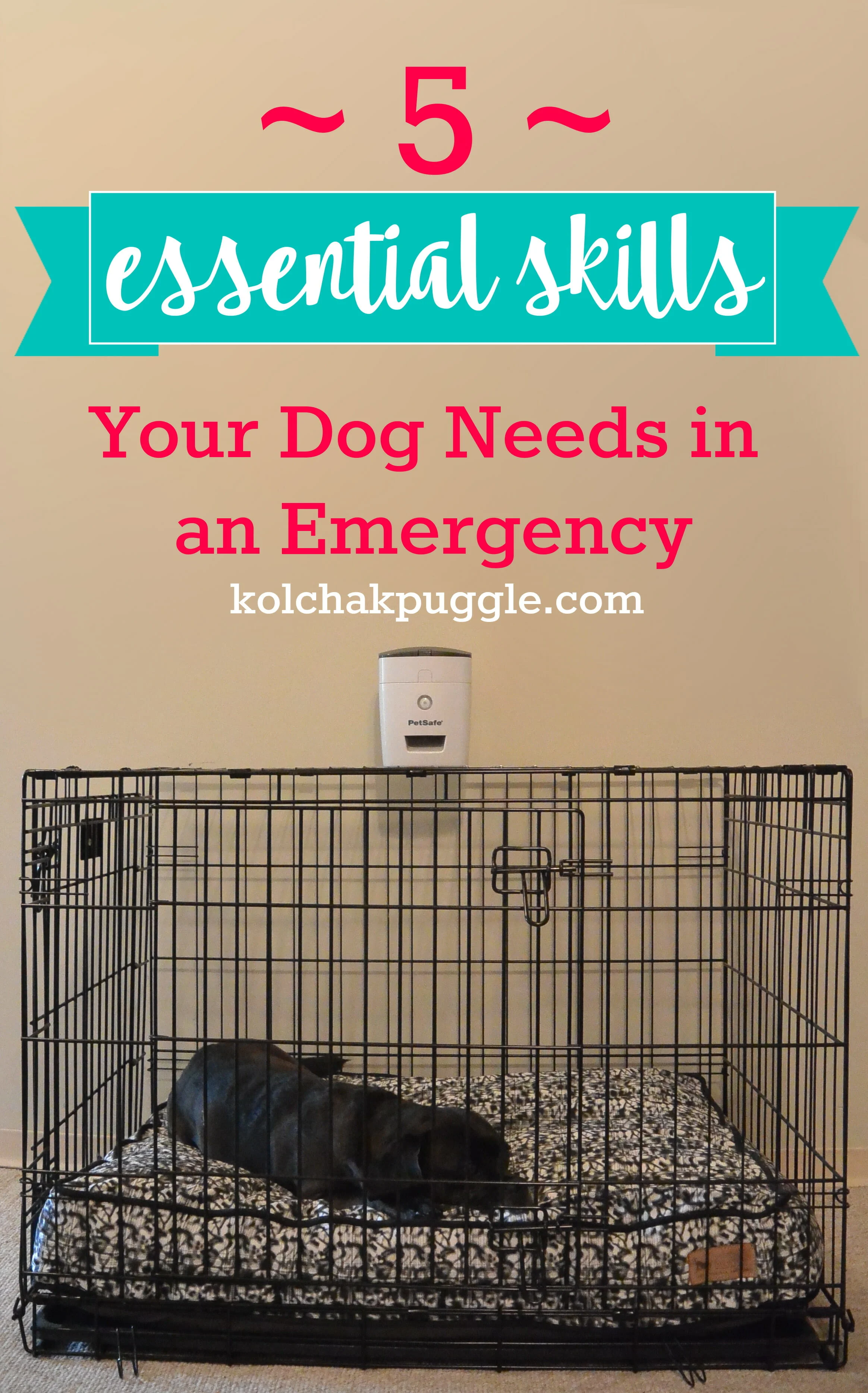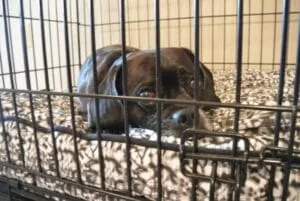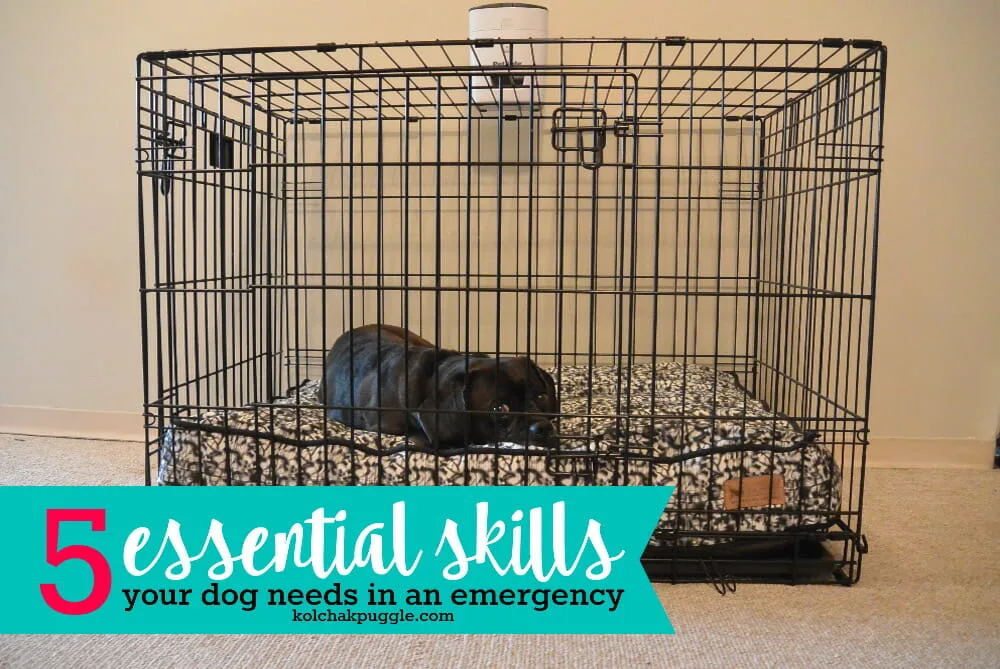As a member of the Etsy affiliate program and an Amazon Associate, I earn from qualifying purchases.
This post may contain affiliate links. For more information on our affiliate policy, please click here.
For someone who loves planning of all sorts, I am woefully unprepared for a real emergency.
I like planning happy things: events, craft projects, holidays. Disaster planning for your pets isn’t exactly joyful, but the truth is? It needs to be done. A few weeks ago, there was a wild fire really close to Casa de Kolchak. We had to keep the windows shut and you could taste the smoke in the air. Less than 15 minutes from home, the fire spread to more than 78 hectares fast and I realized that if we had to leave, I had no plan. No idea where we would stay and no idea what we would do or how to make sure my dogs made it out safe if the evacuation warning came while I was at work. Add that to the fact that my dogs hate change and wouldn’t exactly thrive in an emergency situation and I knew, I had to figure this one out.
Our emergency plan was a hot mess.
I know better. I know how important a solid emergency plan is. So many pets go missing after an emergency. It’s really easy to get separated from your pets when you have to leave home fast, head to the nearest safe space and do it all with a lot of confusion around you. You can’t explain what is going on to your dogs. Naturally they get scared and scared dogs can make bad choices. In my opinion, fear is one of the biggest reasons pets get lost in emergency situations. I’ve been working on training to ensure that if the unexpected happens and we had to evacuate, my dogs won’t get lost in the panic, mayhem and confusion that follows.
5 Essential Skills to Help Prevent Your Pet Getting Lost in an Emergency
There is a ton of great information out there about what should be in your disaster preparedness kit for pets. I couldn’t find many tips on dog training for emergencies. Um, isn’t that like the MOST IMPORTANT part of emergency planning? How much good will 2 weeks worth of freeze dried dog food do me if my dogs get lost? As a weird coincidence, July is PetHub’s Lost Pet Prevention Month, so it seemed like the perfect time to talk about what I’m doing to make sure my pets don’t get lost in an emergency.

1. How to Walk Calmly on a Leash

He’s freakishly strong for his size.
For the most part, my dogs are pretty good, but every now and then, Kolchak pulls like a tug boat and tries to dislocate my shoulder. In an evacuation situation, when you or a stranger is walking your dogs, a pulling dog can lead to a dropped leash and a dog that has run off before you can react.
Bonus tip: Umbilical or “over the shoulder” leashes are a more secure way to tether your pet during an evacuation, leaving your hands free. Leash couplers can help you contain more than one dog without tangling leashes.
2. How to Come When Called

Oh hey, is someone calling me?
Do everyone a favour and teach your dog to “come” every single time the word is used. Always reward your dog handsomely for obeying this command. Never “poison” it by using it for things your dog dislikes (like nail trims or leaving the park). We have two separate commands we use to make this possible.
We use “come” when I mean business or in emergency situations. This is the most common command and the one most strangers will use if they find your pet roaming. Practice it often and reward it generously. Use high value dog treats like jerky, chicken, hot dog and liver.
We use “let’s go” for putting on leashes, going for walks, and any other time I want to call my dogs back to me that is a non-emergency. Avoid using your dog’s name to get their attention. If your dogs gets loose in an emergency, not everyone will know their name. Teaching them to “come” using only that word helps ensure that anyone who finds them roaming can call them to safety.
3. How to Be Comfortable in a Crate

I hate it in here, but I’ll stay here until it’s safe, I guess.
Confession: Kolchak and Felix are not properly crate trained. I mean, I totally intended to crate train them…eventually and then days turned to weeks and then years and here we are. They’re 9 and 13(ish) and no one is crate trained. In our day to day life, this is in no way an issue, but if we were in an emergency, this would be a real problem. People who are unfamiliar with having pets in the house may not be as careful as you at ensuring doors and windows are shut. If you’re staying in a hotel, housekeeping staff could open the door and your pet could bolt. Many evacuation shelters require pets to be crated. A crate ensures that your pet is safe and contained while you are focusing on other things. You can help prevent your pets getting lost in an emergency by ensuring that they are comfortable in a crate. They’ll feel better in a safe place when they can relax and you’ll feel better knowing they are safe and contained.
To help Kolchak and Felix feel more comfortable, I got a wire dog crate large enough for both of them, as well as two smaller travel crates. They’re a bit co-dependant and they are much calmer when they’re crated together.
4. How to Not Fear Strange Noises

This guys used to be afraid of ALL THE SOUNDS, but these days he’s doing much better.
Now is the time to deal your dog’s noise anxiety. Lots of dogs freak out at the sound of alarms and sirens and apparently, dogs aren’t into wearing noise cancelling headphones. Emergencies are FULL of weird noises. In an emergency situation, an alarm or siren could panic your noise anxious dog and make them run away or hide. You can find all sorts of sirens and alarm noises on Youtube. Start out playing them quietly and then gradually increase the volume as your pet gets more comfortable with it. Use lots of treats and fun games or tricks that your dog enjoys to help create a positive association with the alarm noises.
5. How to “Hide” for Safety

I’ll be hiding here, with my blankie, until it’s safe to come out, mkay?
A lot of dogs hide in emergencies. Alarms, smoke, shaking, noise outside – anything could trigger them to seek out a safe space. Teach them to always hide in the same location. For example, if you live in Tornado country, teach them to hide in a safe spot in the basement. In our apartment, I’ve placed their crate in an accessible spot away from windows and heavy furniture (to keep them safe from broken glass or things falling on their crate). Place things they find comforting like a blanket that smells like you, favourite toys or other items in that location. Teaching your dog to hide in the designated place makes sure they always go to the safest space (in case you’re not home to guide them), keeps them from standing at the door and bolting as soon as it’s opened and ensures that you know where to look for them when you’re trying to evacuate fast. I can’t imagine being told you have to leave NOW and not knowing where your pet is.
No one wants to plan for the worst. No matter what you do, an emergency is always going to be stressful, but a little pre-training can help make sure your pet doesn’t get lost.
How many of these skills does your dog already know?
How many do you need to work on? Is there anything you’d add to our list?


Carolyn
Friday 21st of April 2017
I also recommend teaching your dog to wait when you open the crate until you verbally release them or you attach a leash. You don't want your dog jumping out of the crate in the car & running out into traffic. Or if your are crating your dog because they need an activity restriction, it is easier if they don't phase the habit of running around like a nut every time you let them out without the opportunity to catch them.
Jodi Stone
Saturday 30th of July 2016
Well pooh, we don't know any of them. :-(
Kirby the Dorkie
Monday 18th of July 2016
Great post full of good info! Kirby is crate trained from a puppy - my concern is that even though shelters must allow pets, they can be kept in a location separate from the people so I want him to feel as comfortable as possible. How do you teach them to hide? (He has a large kennel in his playroom he could hide in)
I also worry about a fire in my home when I'm not there which is why he is always gated in a front bedroom we turned into his playroom. There's a rescue sticker on the window and no where for him to hide. All of my neighbors know where he is so someone can break the window to get him out.
Mary Hone
Monday 18th of July 2016
Those are all helpful, and I think we are fairly good with them. Roxy may or may not come when called, but I can scoop her up pretty fast. Torrey has a good recall, and ya, she has the hiding thing down pretty good. I guess we are lucky though. If things get bad, we could probably just pick and move.